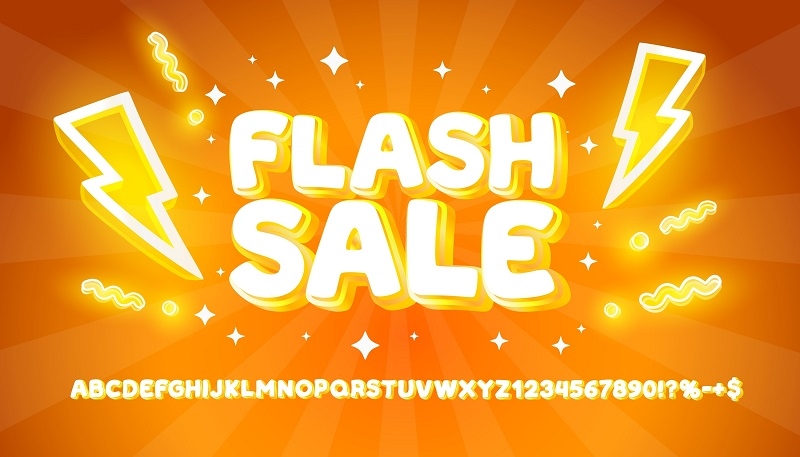
We’ve all been there. Scrolling late at night, half-tempted by that “limited time only” banner flashing across the screen. Suddenly you’re wondering if you should grab that pair of shoes you didn’t even know you wanted ten minutes ago. That, right there, is the magic of a flash sale. It’s exciting, a little nerve-wracking, and often feels like a race against the clock.
But here’s the thing—flash sales aren’t just random discounts. They follow patterns, strategies, and psychology. If you learn how they work, you can get the best deals without falling into common traps. That’s exactly what this flash sale guide is here for: to walk you through the good, the bad, and the clever ways to make the most of these whirlwind events.
Let’s start simple. What is a flash sale exactly? It’s a discount event that runs for a very short period—sometimes just a few hours, sometimes a single day. The goal is urgency. Retailers create a sense of scarcity to push people into buying quickly.
Think of it like a sudden thunderstorm. It comes fast, changes the mood, and disappears just as quickly. The short window makes shoppers feel like they can’t afford to hesitate. That’s why people set alarms or refresh websites like they’re waiting for concert tickets.
Flash sales are all about psychology. Limited time. Limited stock. That ticking clock in the corner of your screen. It triggers something in us. Call it fear of missing out, call it adrenaline—it’s the same reason people line up for Black Friday at 5 a.m.
And honestly? It works because the deals are real. Retailers often slash prices lower than regular promotions just to draw people in. Pair that with the rush of competition, and suddenly you’re adding items to your cart like it’s a sport.
Here’s the upside: there are genuine rewards. The benefits of flash sales are pretty hard to ignore.
You can grab high-value items at steep discounts, sometimes half the price.
It’s a chance to try products you wouldn’t normally buy at full cost.
If you’re patient, you can time purchases—gadgets, appliances, even holiday gifts—to coincide with these events.
For budget-conscious shoppers, flash sales can make quality products far more accessible. It’s not about random splurges; it’s about smart timing.
Of course, there’s another side. It’s not all sunshine and half-price electronics. The flash sales risks are real.
You might buy things you don’t need, simply because the timer makes you panic.
Sometimes the discounts aren’t as big as they seem—retailers may inflate “original prices” to make the deal look better.
Popular items sell out fast, leaving you scrambling and frustrated.
Return policies may be stricter, or items might be final sale.
That’s why it’s important to go in with a plan, rather than getting swept away. Because yes, saving is fun. But regretting a closet full of unused stuff? Not so much.

Preparation makes all the difference. If you want to take advantage of flash sale deals, a little homework goes a long way.
Make a list of what you actually need. That way, when the sale pops up, you can focus on those items instead of browsing aimlessly.
Set a budget. It’s easy to overspend when everything looks tempting.
Compare prices in advance. Check regular prices so you know whether the discount is genuine.
Sign up for alerts. Many retailers notify subscribers early. Being on the list means you might get a head start.
Keep payment details ready. Sales move fast. Having your info saved can be the difference between snagging a deal and watching it sell out.
As Previously Covered: How to Find the Best Coupon Codes That Actually Work?
One brand that has made this a regular highlight is Best Buy. The best buy flash sale deals often cover electronics, appliances, and gadgets people are already hunting for. If you’re eyeing headphones, laptops, or even a new coffee machine, these sales can be gold.
The key is speed. Items are limited, and popular categories—like smart home tech or TVs—go almost immediately. Regular shoppers often track Best Buy’s patterns, knowing roughly which days of the week or times of the month flash sales tend to appear.
It’s not just about discounts. For companies, flash sales serve bigger purposes. They move old inventory quickly. They attract new customers. They create buzz on social media when people share their wins. And for some brands, it’s a way to test demand for a new product.
So yes, while shoppers are racing for bargains, brands are also hitting their own goals. It’s a two-way street.
Not every sale is worth it. Sometimes that “70% off” is just marketing fluff. Here’s how to separate the real steals from the smoke and mirrors:
Use price-tracking tools. They show you how much an item usually costs.
Be wary of unknown sellers with “too good to be true” discounts.
Check shipping costs. Sometimes low prices are offset by high fees.
Always skim return policies before buying.
Remember, the thrill of saving fades quickly if you realize you’ve been tricked.
There’s also the rush. Some people genuinely enjoy the thrill of clicking fast, racing against strangers for that last item. It’s not far off from an auction—except online and with less formality. For many shoppers, the excitement is as much a part of the appeal as the savings.
But emotions cut both ways. Miss out on a deal, and frustration sets in. Buy something impulsively, and regret shows up later. That’s why awareness is everything.
At the end of the day, flash sales aren’t random windfalls. They’re tools. If you treat them strategically, you can save a lot of money over time. Plan your big purchases around them. Stay patient, and don’t give in to every flashy banner.
Used wisely, these sales let you stretch your budget while still enjoying quality. Used recklessly, they clutter your life with things you didn’t need.
On A Similar Note: Discover What is a Refurbished Product and How It Works
Flash sales aren’t going anywhere. If anything, they’re becoming more common as online shopping grows. Understanding how they work, what the perks are, and where the pitfalls lie is the key to using them well.
This flash sale guide is meant to remind shoppers of two things. First, there are real bargains to be had if you’re ready. Second, don’t let urgency trick you into buying what doesn’t serve you. Shop with a list, a budget, and a cool head. The deals will still feel sweet—without the regret later.
So next time you see that little countdown timer ticking away, ask yourself: is this really a win for me? If the answer’s yes, click fast. If it’s no, step away and wait for the next storm.
This content was created by AI